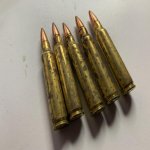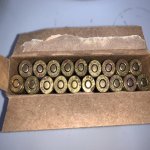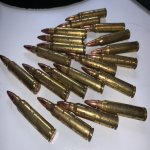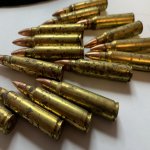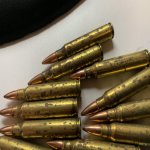I recently had an opportunity to buy some ammo that the previous owner stored in a outdoor locked shed, and in which inside the shed were various new thick wooden cabinets that protected the ammo. Ammo was not exposed to any sunlight, but the shed is not heated or cooled either. In looking at the date of the ammo, it was from 2012, and it was factory American-made factory .223 ammo from a well known brand. I plan to try the ammo out later this week. The factory sealed ammo cardboard box seems to be in excellent condition. No signs of moisture or warping, etc. I opened the box to have a look at the ammo and all the rounds had some spots on it. I am not sure whether it is just some tarnish from the inevitable hot/cold fluctuations being in a shed for nine years, but just wanted to get your feedback on this whether you have seen this before and whether it is safe to shoot, before I try shooting it. Hopefully it's just surface tarnish / aesthetics.
